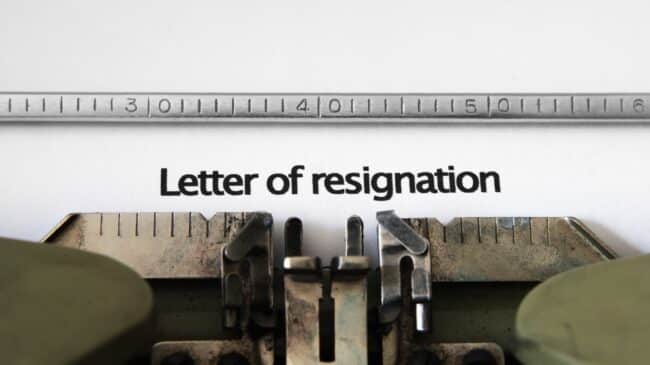While the beginning of the COVID-19 pandemic was dominated by layoffs and furloughs as employers dealt with lockdowns and uncertainty, the recent workforce dynamic is quite the opposite. Even with fears of a recession, the “Great Resignation,” which refers to the increased rate at which American workers have been resigning from their jobs since 2021, and “quiet quitting,” often used to describe workers who are doing the bare minimum requirements of their jobs, continue to impact the workplace across sectors today.
For some public sector workers, the portability of retirement benefits is becoming increasingly crucial to their career and employment decisions. With today’s workers proving to be less likely to stay in one position than previous generations, they need their accumulated retirement incomes to be retained even if they change jobs. To keep up with this shifting workforce environment and attract quality workers to government jobs, policymakers need to ensure that public retirement plans work for both short-term and long-term employees.
About a third of all government sector workers said they were considering quitting earlier this year, according to MissionSquare Research Institute. To make matters worse for government agencies, young federal employees are leaving their jobs at a rapid rate, with nearly 10% of those under 30 quitting in the 2021 fiscal year, according to a survey of federal workers by the Partnership for Public Service. This contributed to roughly one million fewer state and local government workers in 2021 compared to 2020, according to Statista. The potential for public workers departing their jobs appears to be even worse for teachers, with around two-in-five teachers saying they’re planning to quit between 2022 and 2023, according to Bloomberg.
While the transitory nature of public workers has been particularly noticeable over the last two years, this has been a long-developing trend. Even before the pandemic, millennials and Gen Z workers told pollsters like Gallup they valued mobility and the opportunity to work remotely. In addition, they put a lot of value on non-monetary aspects of employment, such as the ability to pick projects rather than specific jobs, mentorship, and easy-to-access technology in the workplace.
Overall, these trends help show that fewer public sector employees are likely to spend a career with one employer than in previous eras. Recognizing the trends of the modern workforce is essential to recruiting and retaining good workers and to the success of a retirement plan, whose general purpose is to fit the retirement needs of its members.
Public retirement plans should calibrate their benefits to provide a clear level of retirement security, even for those who do not stay with that employer for a decade or more. Security in retirement can be quantified and defined as a range. For example, a typical retiree would like to have 70% to 90% income replacement in retirement from all of their income sources. Any retirement plan’s most basic goal should be to provide enough income during retirement to maintain something similar to the retiree’s pre-retirement standard of living. As a rule of thumb, a well-designed retirement plan (or combination of employer-sponsored retirement plans, Social Security, and/or private savings) should replace approximately 80% of a worker’s final salary. This assumes retirees will have a lower cost of living with most of their major financial commitments, such as mortgages and childrearing, complete.
Ensuring that these metrics are met is key in providing an adequate retirement plan, whether an employee stays for 30 years or just one year. Many public employers use retirement policies and plan designs to incentivize retention, with retirement benefits that increase in value as an employee accumulates years of service. While there is nothing wrong with rewarding public workers for sticking around, this too often results in inadequate retirement benefits for those who do not spend their entire careers in one position. To ensure that public employers are providing adequate retirement in a shifting job environment, there are a few key policies that should be evaluated and reformed.
One way to adjust retirement benefits to match the modern workforce is for government employers to reduce or eliminate vesting periods, the number of years required in the plan before benefits are fully “owned” by the participant. Many defined benefit (DB) plans have long vesting periods before a participant is able to take advantage of the benefits portion of their compensation. Public defined contribution (DC) plans—while a completely different type of plan—can also have excessive vesting requirements that do not suit a mobile workforce. If an employee leaves before being fully vested, their transferrable benefits can be substantially reduced.
Other potential solutions that government employers could consider are optional or default defined contribution plans, which have unique advantages in being able to meet career mobility realities. Since DC plans have individual accounts, they are easily transferable with the employee to a new workplace. Although DC plans do not guarantee a specific amount of retirement income, there are several ways to ensure that the appropriate contributions to the plan are made and retirement security is achieved.
The structure of the workforce is changing with new trends in workers leaving sooner and more frequently. It is important to ensure that government employers meet the demands of public sector workers by introducing more portable retirement options and addressing the long vesting requirements of many plans. Policymakers should seek reforms that maintain valuable benefits for the career, 30-plus-year worker, while also helping the increasingly common worker who stays on a job for one-to-five years. By doing this, public employers can better serve the growing number of employees who are less likely to stick around for their whole careers.
Stay in Touch with Our Pension Experts
Reason Foundation’s Pension Integrity Project has helped policymakers in states like Arizona, Colorado, Michigan, and Montana implement substantive pension reforms. Our monthly newsletter highlights the latest actuarial analysis and policy insights from our team.

